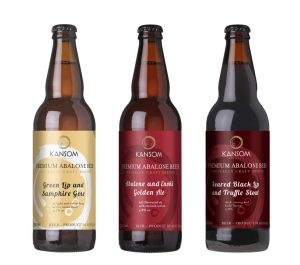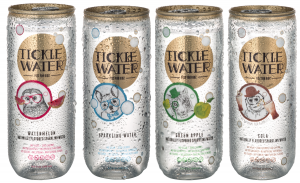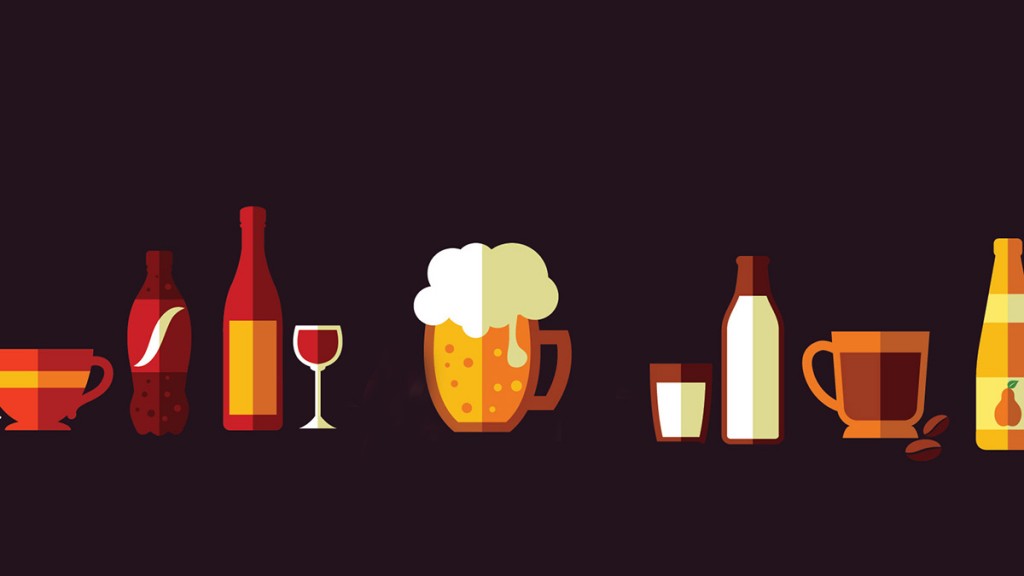I have never drunk beer, much less for pleasure.
A lifetime ago, I was ‘prescribed’ a daily
bottle of stout and peanuts by an ancient
baby health nurse in order to increase breast milk supply.
I’m not sure that counts as drinking for pleasure.
I had my first taste of craft beer at Fine Food Australia in September this year. What tempted me was Kansom’s Abalone Beer, the offspring of Kansom Australia Abalone’s partnership with Red Duck Micro Brewery in Ballarat. I didn’t know you could make beer from abalone, much less infuse it with magical ingredients like Samphire, Enoki Mushrooms or Black Truffles.
I was blown away by the ‘nose’ and the complexity. As my senses were awakened to this new experience, gastronomer mind raced with ideas of how to pair these elixirs with different foods. Then marketing mind began to think about the exponential growth in craft beers, craft breweries and craft beer tourism. Life-long learner mind decided to see what scholarly research existed on the whole craft beer thing. Joyfully, most of the papers I found were published in 2017.
Types of Craft Beer Tourism
A study involving UK, Italy and Spain found that these were the most commonly perceived forms of Craft Beer Tourism:
- Craft beer trails/tours (several visits on the same day)
- Craft beer/food pairings – craft beer in combination with food
- Craft brewery visitation in combination with architecture, food, wine, heritage etc
- Tastings, open craft brewery visits
- Fairs, brewing days, food fairs and similar events
Italian and Spanish participants were more interested or aware than UK participants in craft beer and food pairings, tastings or visits to the craft beer factory but their main challenge was the lack of a local beer drinking culture. The UK and Australia have no such challenge. My observation is that Australia now just really starting to explore the pairing foodscape but much more can and should be done in this event space.
Profile of a Craft Brewery Visitor in the US’s More Mature Market
A paper on beer tourism in Central Kentucky found that the profile of a craft brewery visitor was: white male, approximately 33 years old, well-educated (40% 4 year degree) (35% graduate training to doctorate), mean income USD83,000, mean number of visits to a particular brewery 3.2, travelled long distances and almost half were staying overnight in the surrounding area.
A North Carolina study found that 38% of respondents were not local and of those 36.7% indicated the main purpose for their trip was the beer. Their profile was male, approx 38 years old, single or married, Bachelor or Master’s degree with income ranging from USD40,000-119,000, 60% staying overnight for an average of 3 nights, with most staying with friends/relatives or hotel/motel and visiting an average of 2 breweries, travelling with friends or spouse.
Experience Preferences of Craft Brewery Visitors
The Kentucky study found the top reasons for visiting a brewery are:
- To taste new beers
- To be with family and friends
- To experience Kentucky beers
- To buy beer
Males reported a stronger mean interest in tasting new beer, experiencing Kentucky beer and buying beer. Females reported a stronger mean interest for using breweries to be with friends and family, buy beer and get away for the day/weekend.
Motivational Factors for Visiting Craft Breweries
In the Kentucky study respondents reported they were motivated to learn something new and that breweries with a variety of beers, speciality or seasonal beers offered an authentic experience that expanded their palette. There was a strong desire to support local businesses and purchase local craft beer when possible, indicating the participation in a brewery tour is perceived as a true local experience.
The North Carolina study compared beer-focused with other brewery tourists and found the top five motivational factors were related to ‘the craft beer experience’, enjoyment, socialising and beer consumption:
- To taste new beer
- To experience North Carolina beer
- To increase my beer knowledge
- So I can be with my family
- To buy beer
The study suggests that beer-focused and other brewery tourists should be considered as separate target markets. ‘Other brewery tourists’ are more likely to stay overnight.
Brand Loyalty Factors
A 2015 study in North Carolina compared brand loyalty across two craft breweries found the factors that most influenced brand loyalty were firstly, ‘connection to the local community,’ secondly, ‘desire for unique consumer products’ and thirdly, ‘satisfaction.’
‘Connection to the local community’ or ‘neo-localism’ is the “deliberate seeking out of regional lore and local attachment by residents (new and old) as a delayed reaction to the destruction in [the] modern [world] of traditional bonds to community and family.” According to Murray and Kline, neo-localism is about reconnecting with place (by choice and not necessity) and cultivating a relationship with local identities while boosting local economies.
The ‘desire for unique consumer products’ speaks to our need for uniqueness and how we choose products which are rare and are perceived to help create a unique self and social image. We are drawn to products whose brand personality reflects our own perception of ourselves or how we would like to be perceived.
‘Satisfaction’ as a factor of brand loyalty speaks to consumers’ needs to maximise rewards and minimise costs (or risks) in switching brands. Most obvious of the factors, ‘satisfied’ customers are more likely to be loyal to a product.
Implications for Marketing
Young adults are likely to be active on social media, so creating and maintaining profiles on Twitter, Instagram and Facebook should help to bring in more customers. Breweries should focus on providing a wider selection of seasonal or limited edition beers. Brewery tours should provide information on the beer making process, history of their establishment and expand on the ‘local’ theme such as where the ingredients and inspiration for the beer came from.
Messages to beer-focused tourists should emphasise and describe the experience, (tastes, history, knowledge), consumption/availability, while showing how enjoyment and socialisation needs can be met.
Craft breweries and brew pubs should focus on directly approaching beer-focused tourists through club memberships, events, repeat-visit incentives, product quality and value of the brewery experience to increase consumer knowledge and confidence.
Destination marketing organisation’s marketing to ‘other brewery tourists’ should emphasise the enjoyment and socialising aspects of beer tourism and how it adds to their overall vacation experience.
Tip of the Craft Beer-berg
These are just a smattering of the insights recent academic research reveals on the burgeoning craft beer tourism industry. Let me know if you are interested in scholarly research on craft beer tourism’s role on placemaking, (including rural destination development in Australia), the role of DMOs, collaborators and tourism support.
Viktoria Darabi is a Food Culture Tourism Whisperer, Food & Beverage Trendspotter & Futurist, championing the power of food culture activities to celebrate multi-culturalism, promote social cohesion, engender a sense of community pride and to transform or construct ‘place’ to define a destination’s identity and distinctiveness.






















